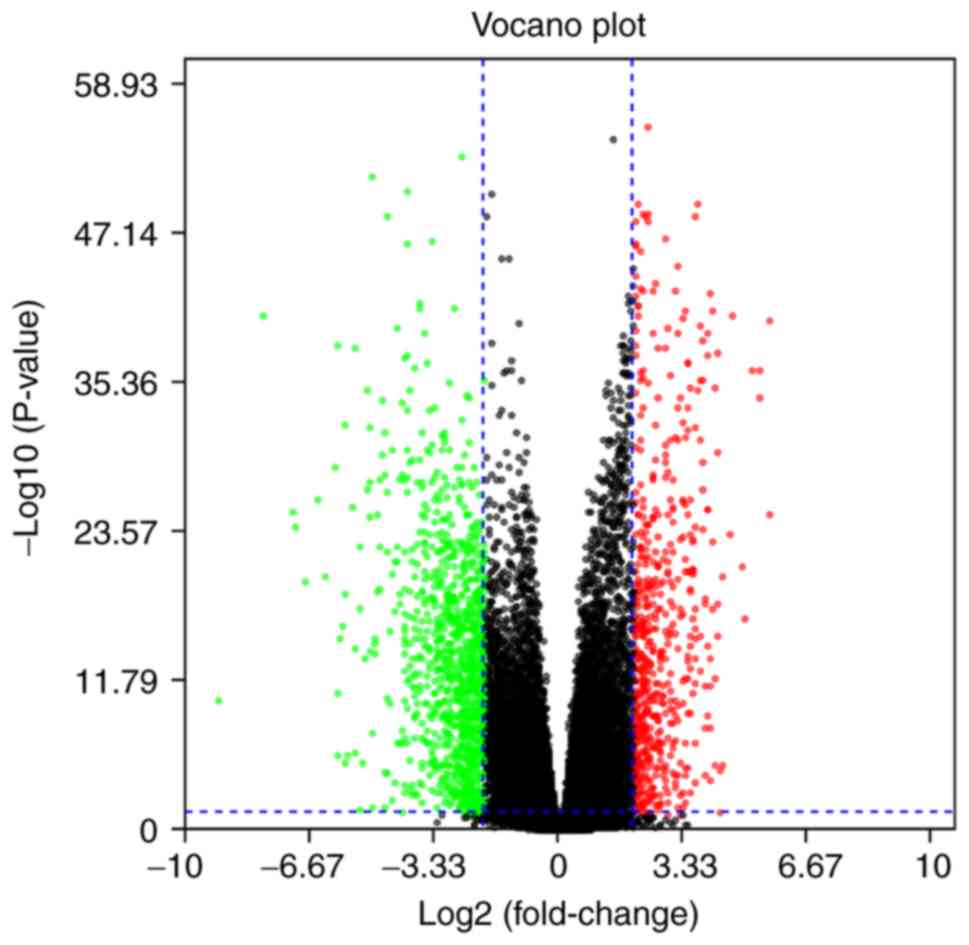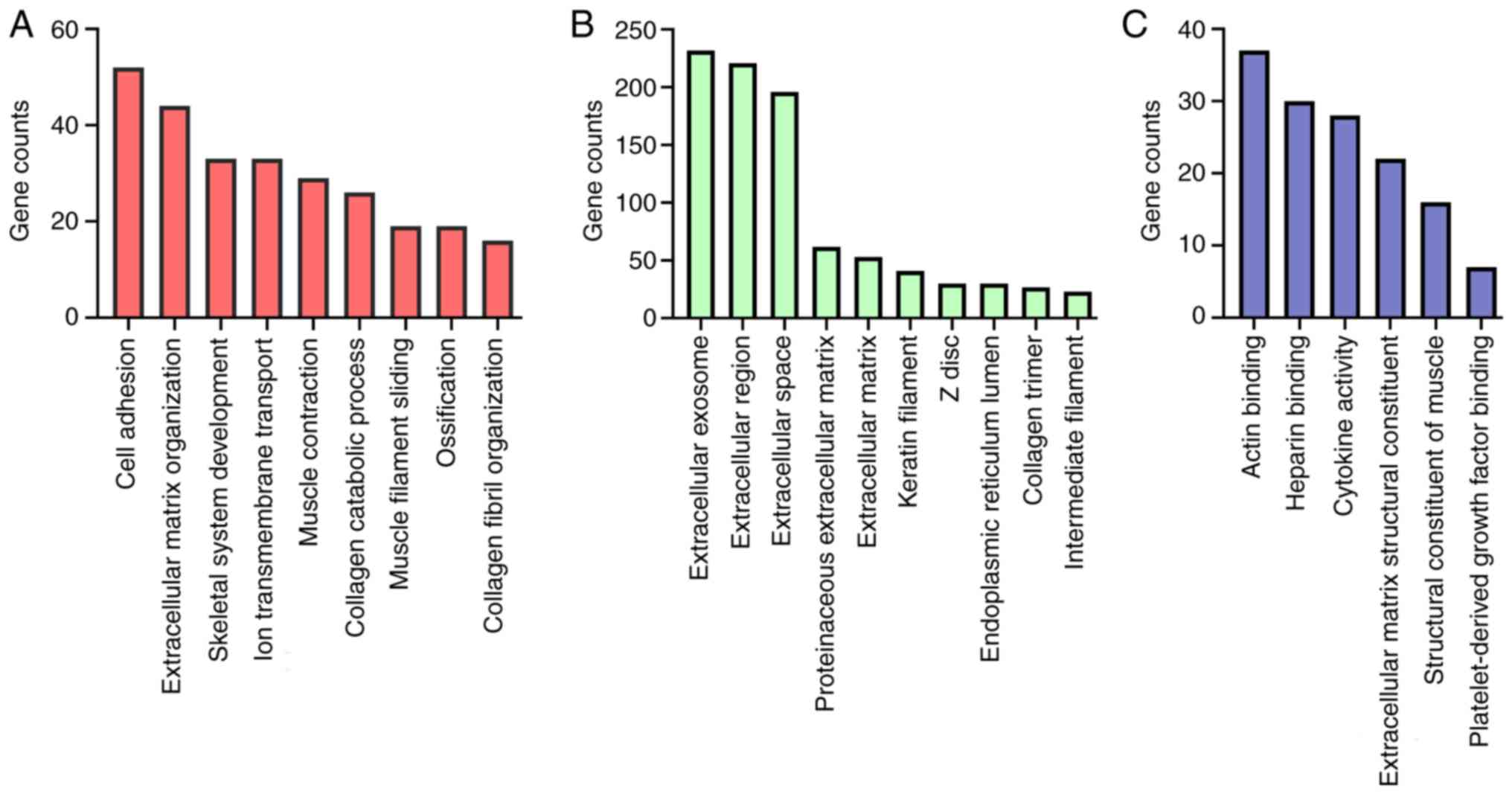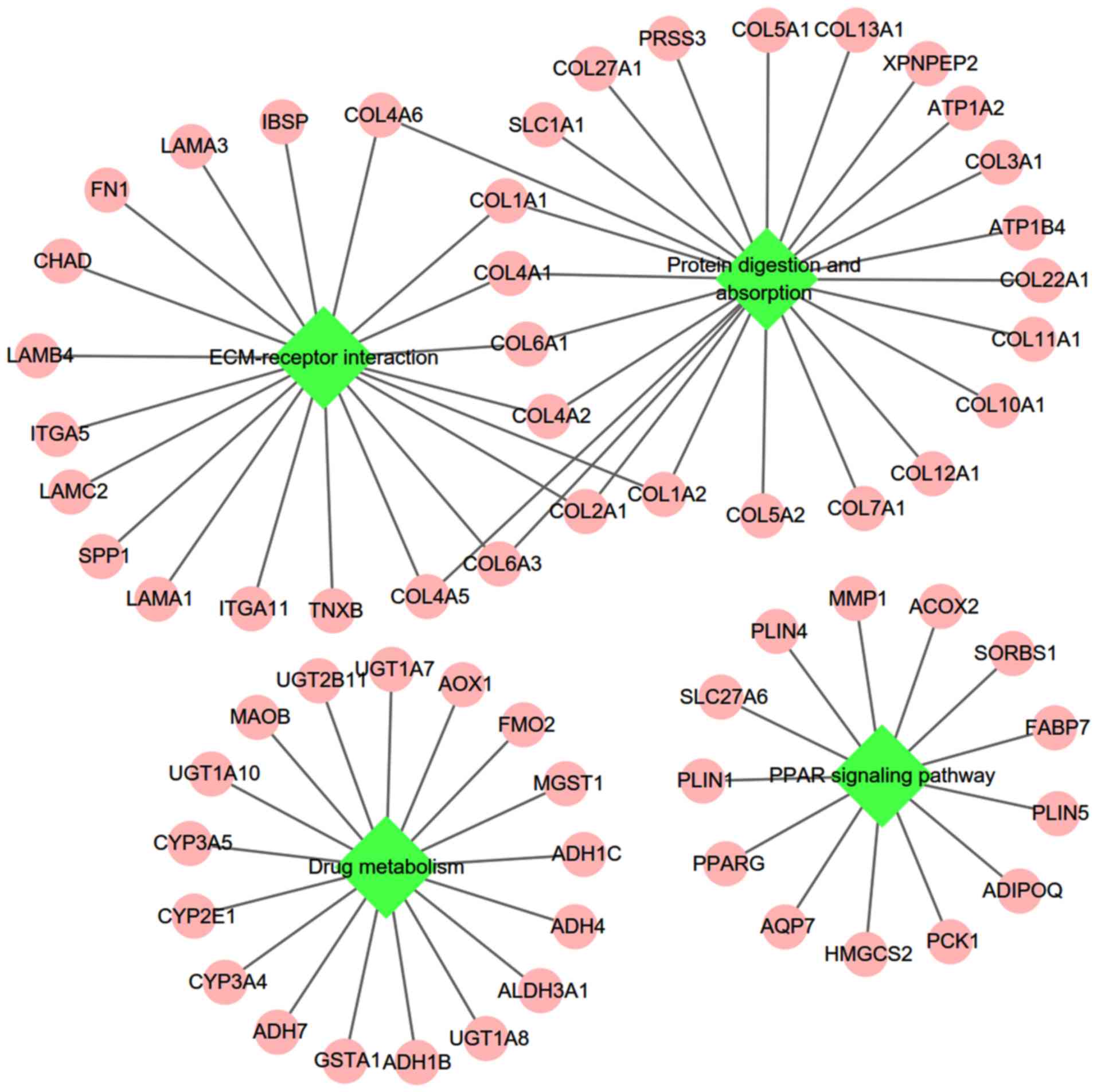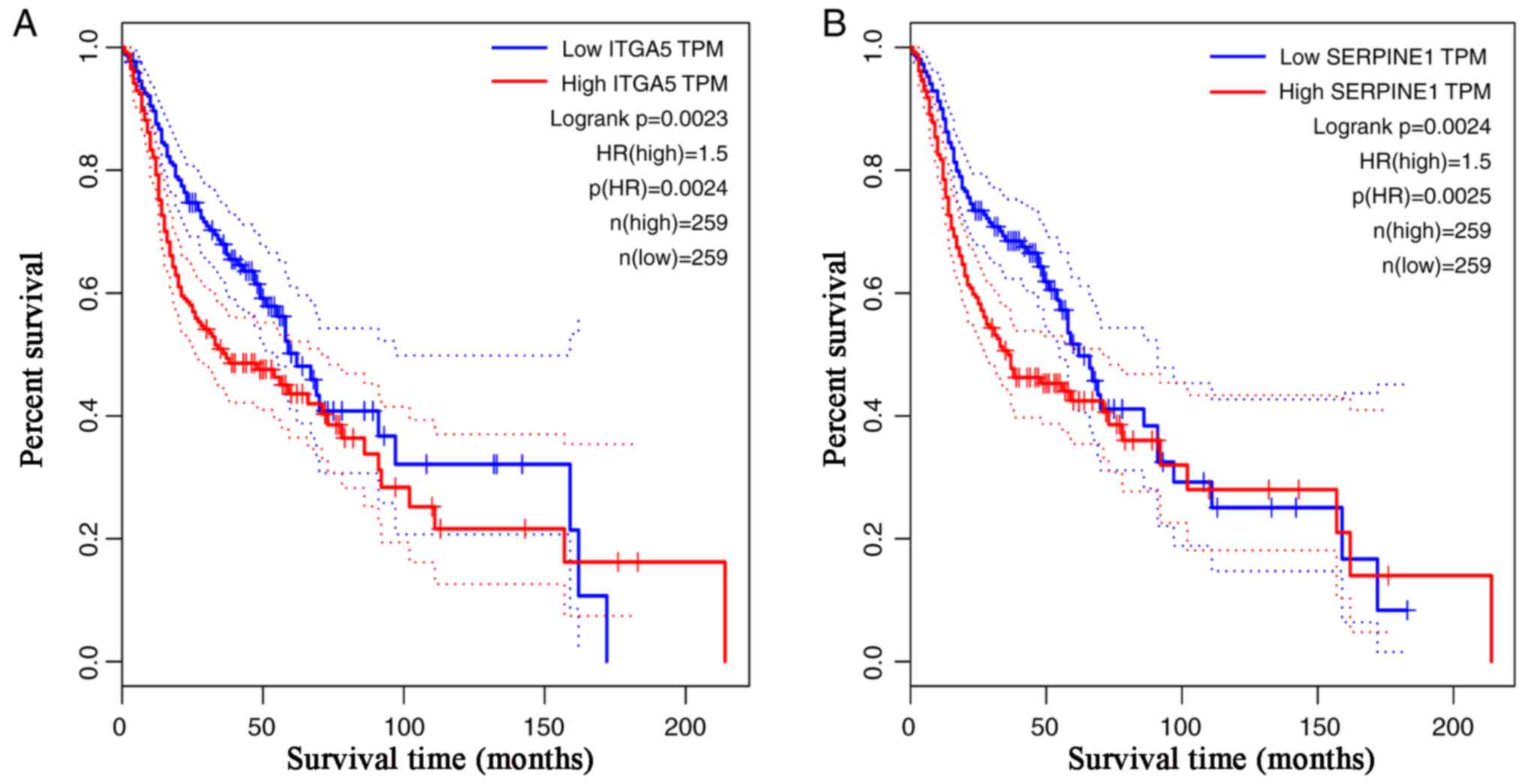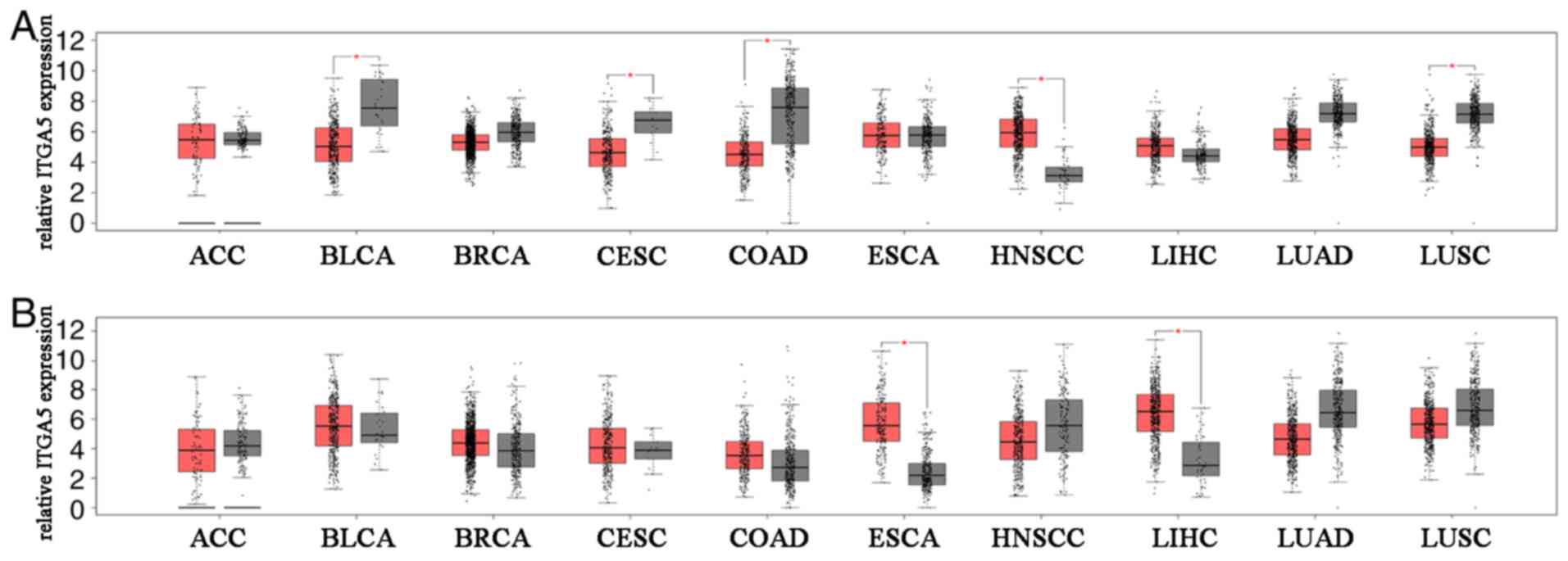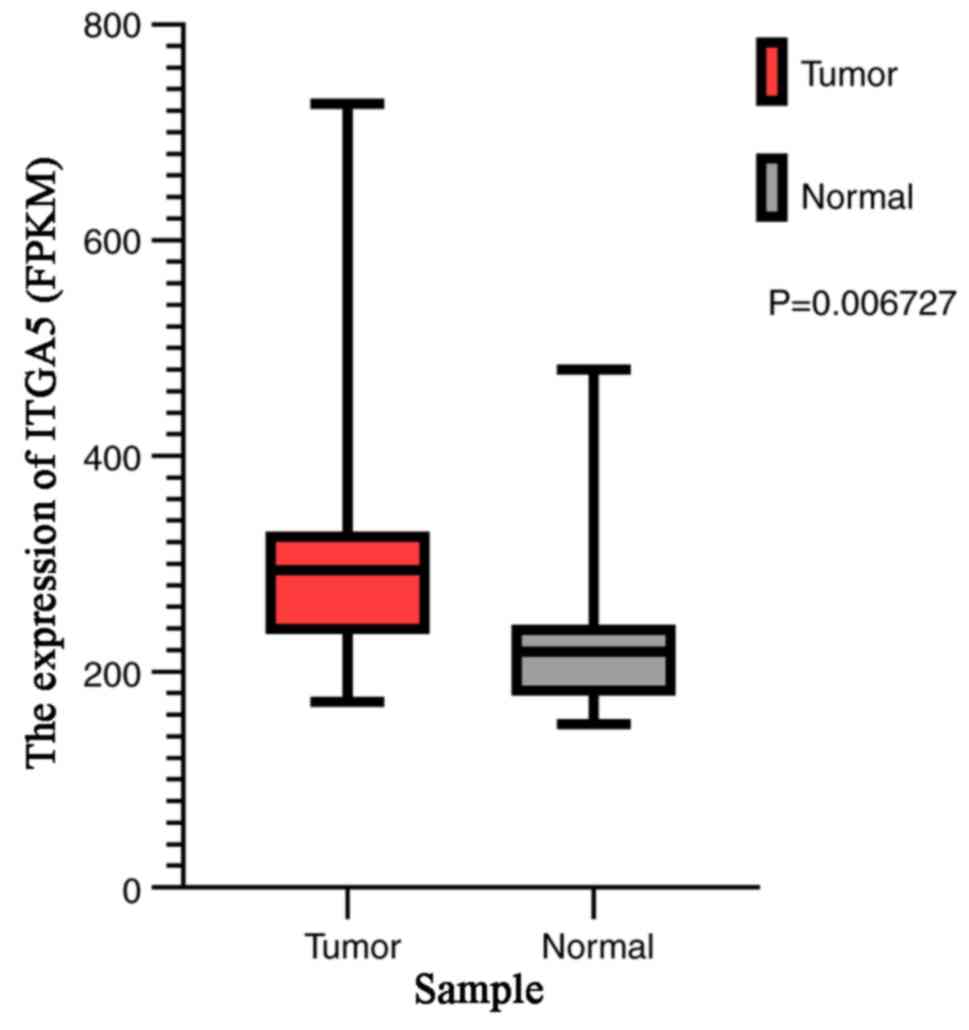|
1
|
Siegel RL, Miller KD and Jemal A: Cancer
statistics, 2018. CA Cancer J Clin. 68:7–30. 2018. View Article : Google Scholar : PubMed/NCBI
|
|
2
|
Cancer Genome Atlas Network, .
Comprehensive genomic characterization of head and neck squamous
cell carcinomas. Nature. 517:576–582. 2015. View Article : Google Scholar : PubMed/NCBI
|
|
3
|
Bray F, Ferlay J, Soerjomataram I, Siegel
RL, Torre LA and Jemal A: Global cancer statistics 2018: GLOBOCAN
estimates of incidence and mortality worldwide for 36 cancers in
185 countries. CA Cancer J Clin. 68:394–424. 2018. View Article : Google Scholar : PubMed/NCBI
|
|
4
|
Goossens N, Nakagawa S, Sun X and Hoshida
Y: Cancer biomarker discovery and validation. Transl Cancer Res.
4:256–269. 2015.PubMed/NCBI
|
|
5
|
Li B, Zhu J and Meng L: High expression of
ACTL8 is poor prognosis and accelerates cell progression in head
and neck squamous cell carcinoma. Mol Med Rep. 19:877–884.
2019.PubMed/NCBI
|
|
6
|
Wang L, Chen C, Li F, Hua Q, Chen S, Xiao
B, Dai M, Li M, Zheng A, Yu D, et al: Down-regulation of neutrophil
gelatinase-associated lipocalin in head and neck squamous cell
carcinoma correlated with tumorigenesis, not with metastasis. Int J
Clin Exp Pathol. 8:8857–8868. 2015.PubMed/NCBI
|
|
7
|
Xiang Y, Li F, Wang L, Zheng A, Zuo J, Li
M, Wang Y, Xu Y, Chen C, Chen S, et al: Decreased calpain 6
expression is associated with tumorigenesis and poor prognosis in
HNSCC. Oncol Lett. 13:2237–2243. 2017. View Article : Google Scholar : PubMed/NCBI
|
|
8
|
Cancer Genome Atlas Research Network, ;
Weinstein JN, Collisson EA, Mills GB, Shaw KR, Ozenberger BA,
Ellrott K, Shmulevich I, Sander C and Stuart JM: The Cancer Genome
Atlas Pan-Cancer analysis project. Nat Genet. 45:1113–1120. 2013.
View Article : Google Scholar : PubMed/NCBI
|
|
9
|
Wilson S, Fitzsimons M, Ferguson M, Heath
A, Jensen M, Miller J, Murphy MW, Porter J, Sahni H, Staudt L, et
al: Developing cancer informatics applications and tools using the
NCI genomic data commons API. Cancer Res. 77:e15–e18. 2017.
View Article : Google Scholar : PubMed/NCBI
|
|
10
|
Wilhite SE and Barrett T: Strategies to
explore functional genomics data sets in NCBI's GEO database.
Methods Mol Biol. 802:41–53. 2012. View Article : Google Scholar : PubMed/NCBI
|
|
11
|
Kuriakose MA, Chen WT, He ZM, Sikora AG,
Zhang P, Zhang ZY, Qiu WL, Hsu DF, McMunn-Coffran C, Brown SM, et
al: Selection and validation of differentially expressed genes in
head and neck cancer. Cell Mol Life Sci. 61:1372–1383. 2004.
View Article : Google Scholar : PubMed/NCBI
|
|
12
|
Huang da W, Sherman BT and Lempicki RA:
Systematic and integrative analysis of large gene lists using DAVID
bioinformatics resources. Nat Protoc. 4:44–57. 2009. View Article : Google Scholar : PubMed/NCBI
|
|
13
|
Bindea G, Mlecnik B, Hackl H, Charoentong
P, Tosolini M, Kirilovsky A, Fridman WH, Pagès F, Trajanoski Z and
Galon J: ClueGO: A cytoscape plug-in to decipher functionally
grouped gene ontology and pathway annotation networks.
Bioinformatics. 25:1091–1093. 2009. View Article : Google Scholar : PubMed/NCBI
|
|
14
|
Szklarczyk D, Gable AL, Lyon D, Junge A,
Wyder S, Huerta-Cepas J, Simonovic M, Doncheva NT, Morris JH, Bork
P, et al: STRING v11: Protein-protein association networks with
increased coverage, supporting functional discovery in genome-wide
experimental datasets. Nucleic Acids Res. 47:D607–D613. 2019.
View Article : Google Scholar : PubMed/NCBI
|
|
15
|
Scardoni G, Tosadori G, Faizan M, Spoto F,
Fabbri F and Laudanna C: Biological network analysis with
CentiScaPe: Centralities and experimental dataset integration.
F1000Res. 3:1392014. View Article : Google Scholar : PubMed/NCBI
|
|
16
|
Tang Z, Li C, Kang B, Gao G, Li C and
Zhang Z: GEPIA: A web server for cancer and normal gene expression
profiling and interactive analyses. Nucleic Acids Res. 45:W98–W102.
2017. View Article : Google Scholar : PubMed/NCBI
|
|
17
|
Meighan CM, Kelly VE, Krahe EC and Gaeta
AJ: α integrin cytoplasmic tails can rescue the loss of Rho-family
GTPase signaling in the C. elegans somatic gonad. Mech Dev.
136:111–122. 2015. View Article : Google Scholar : PubMed/NCBI
|
|
18
|
Morandi EM, Verstappen R, Zwierzina ME,
Geley S, Pierer G and Ploner C: ITGAV and ITGA5 diversely regulate
proliferation and adipogenic differentiation of human adipose
derived stem cells. Sci Rep. 6:288892016. View Article : Google Scholar : PubMed/NCBI
|
|
19
|
Zhao X, Wu Y and Lv Z: miR-128 modulates
hepatocellular carcinoma by inhibition of ITGA2 and ITGA5
expression. Am J Transl Res. 7:1564–1573. 2015.PubMed/NCBI
|
|
20
|
Fang Z, Yao W, Xiong Y, Zhang J, Liu L, Li
J, Zhang C and Wan J: Functional elucidation and
methylation-mediated downregulation of ITGA5 gene in breast cancer
cell line MDA-MB-468. J Cell Biochem. 110:1130–1141. 2010.
View Article : Google Scholar : PubMed/NCBI
|
|
21
|
Konstantinovsky S, Smith Y, Zilber S, Tuft
Stavnes H, Becker AM, Nesland JM, Reich R and Davidson B: Breast
carcinoma cells in primary tumors and effusions have different gene
array profiles. J Oncol. 2010:9690842010. View Article : Google Scholar : PubMed/NCBI
|
|
22
|
Xiao Y, Li Y, Tao H, Humphries B, Li A,
Jiang Y, Yang C, Luo R and Wang Z: Integrin alpha5 down-regulation
by miR-205 suppresses triple negative breast cancer stemness and
metastasis by inhibiting the Src/Vav2/Rac1 pathway. Cancer Lett.
433:199–209. 2018. View Article : Google Scholar : PubMed/NCBI
|
|
23
|
Gong C, Yang Z, Wu F, Han L, Liu Y and
Gong W: miR-17 inhibits ovarian cancer cell peritoneal metastasis
by targeting ITGA5 and ITGB1. Oncol Rep. 36:2177–2183. 2016.
View Article : Google Scholar : PubMed/NCBI
|
|
24
|
Feng L, Ma J, Ji H, Liu Y and Hu W:
miR-330-5p suppresses glioblastoma cell proliferation and
invasiveness through targeting ITGA5. Biosci Rep.
37:BSR201700192017. View Article : Google Scholar : PubMed/NCBI
|
|
25
|
Fan QC, Tian H, Wang Y and Liu XB:
Integrin-α5 promoted the progression of oral squamous cell
carcinoma and modulated PI3K/AKT signaling pathway. Arch Oral Biol.
101:85–91. 2019. View Article : Google Scholar : PubMed/NCBI
|
|
26
|
Mazzoccoli G, Pazienza V, Panza A, Valvano
MR, Benegiamo G, Vinciguerra M, Andriulli A and Piepoli A: ARNTL2
and SERPINE1: Potential biomarkers for tumor aggressiveness in
colorectal cancer. J Cancer Res Clin Oncol. 138:501–511. 2012.
View Article : Google Scholar : PubMed/NCBI
|
|
27
|
Klimczak-Bitner AA, Kordek R, Bitner J,
Musial J and Szemraj J: Expression of MMP9, SERPINE1 and miR-134 as
prognostic factors in esophageal cancer. Oncol Lett. 12:4133–4138.
2016. View Article : Google Scholar : PubMed/NCBI
|
|
28
|
Gao S, Nielsen BS, Krogdahl A, Sørensen
JA, Tagesen J, Dabelsteen S, Dabelsteen E and Andreasen PA:
Epigenetic alterations of the SERPINE1 gene in oral squamous cell
carcinomas and normal oral mucosa. Genes Chromosomes Cancer.
49:526–538. 2010.PubMed/NCBI
|
|
29
|
Pavón MA, Arroyo-Solera I, Téllez-Gabriel
M, León X, Virós D, López M, Gallardo A, Céspedes MV, Casanova I,
López-Pousa A, et al: Enhanced cell migration and apoptosis
resistance may underlie the association between high SERPINE1
expression and poor outcome in head and neck carcinoma patients.
Oncotarget. 6:29016–29033. 2015. View Article : Google Scholar : PubMed/NCBI
|
|
30
|
Arroyo-Solera I, Pavón MA, León X, López
M, Gallardo A, Céspedes MV, Casanova I, Pallarès V, López-Pousa A,
Mangues MA, et al: Effect of serpinE1 overexpression on the primary
tumor and lymph node, and lung metastases in head and neck squamous
cell carcinoma. Head Neck. 41:429–439. 2019.PubMed/NCBI
|















